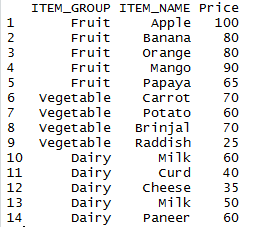

If you want to use dplyr's rename function, it would be best to create a named vector / list and call it using the. It's still a bit over my head, unfortunately, but I can see that it's doable >_> If, however, you need something that automatically appends ".xxx" to whatever column name is supplied to it, I recommend you have a close look at that section. Rename(!!paste("Sepal.Length", "xxx", sep = ".") := Sepal.Length) So if you're happy to do that manually, you can just: df %>% > df1 %>% rename(!!newname := value, !!newname2 := index) In my simpler use case, I just needed to rename a column to the value of a string: > df1 = data_frame(index = 1:5, value = c(10, 20, 30, 40, 50)) I'm a little late to the party on this, but after staring at the programming vignette for a long time, I found the relevant example in the Different input and output variable Write a function that takes your old column names as input and returns your new column names as output, and you're done :) Previously, e.g., funs( paste0(., to_app) )ĮDIT: these days, I'd recommend using dplyr::rename_with, as per answer. This list() coding replaces the previous funs() coding starting in dplyr_0.7.0. rename_at(df, vars( contains("Length") ), list( ~paste0(., ".xxx") ) ) You can also use the select helper functions to choose variables for renaming, such as contains. rename_at(df, cols, list( ~paste0(., to_app) ) ) This has been superseded in version 1.0.0, which means there are new functions to use as above but this particular function is not going away. Sepal.Width Įarlier versions of dplyr use rename_at(). You can use the tidy-select function all_of() (or others) to choose columns. The function argument comes before the column argument. cols = c("Sepal.Length", "Petal.Length")įor dplyr_1.0.0, use rename_with(). In your example, the paste0 function can be used to append on the appropriate suffix to each column. The ntile() function is used to divide the data into N bins.You can use the rename_at() function for this (starting in dplyr_0.7.0) or rename_with() (starting in dplyr_1.0.0).įor example, you can pass the variables you want to rename as strings. Dplyr package is provided with mutate() function and ntile() function. Quantile, Decile and Percentile can be calculated using ntile() Function in R. Rowwise() %>% mutate(row_max= max(Sepal.Length:Petal.Width))Ĭalculate percentile, quantile, N tile of dataframe in R using dplyr (create column with percentile rank) We will be creating additional variable row_max using mutate function and rowwise() function to store the row wise maximum variable. Dplyr package is provided with rowwise() function with which we will be doing row wise maximum or row wise minimum operations. Row wise operation in R can be performed using rowwise() function in dplyr package. NOTE: Make sure you set is.na() condition at the beginning of R case_when to handle the missing values. So the snapshot of resultant data frame will be

Dplyr package in R is provided with sample_n() function which selects random n rows from a data frame.

Sample_n() and Sample_frac () are the functions used to select random samples from the data set in R using Dplyr Package. Select Random Samples in R with Dplyr – (sample_n() and sample_frac())


 0 kommentar(er)
0 kommentar(er)
